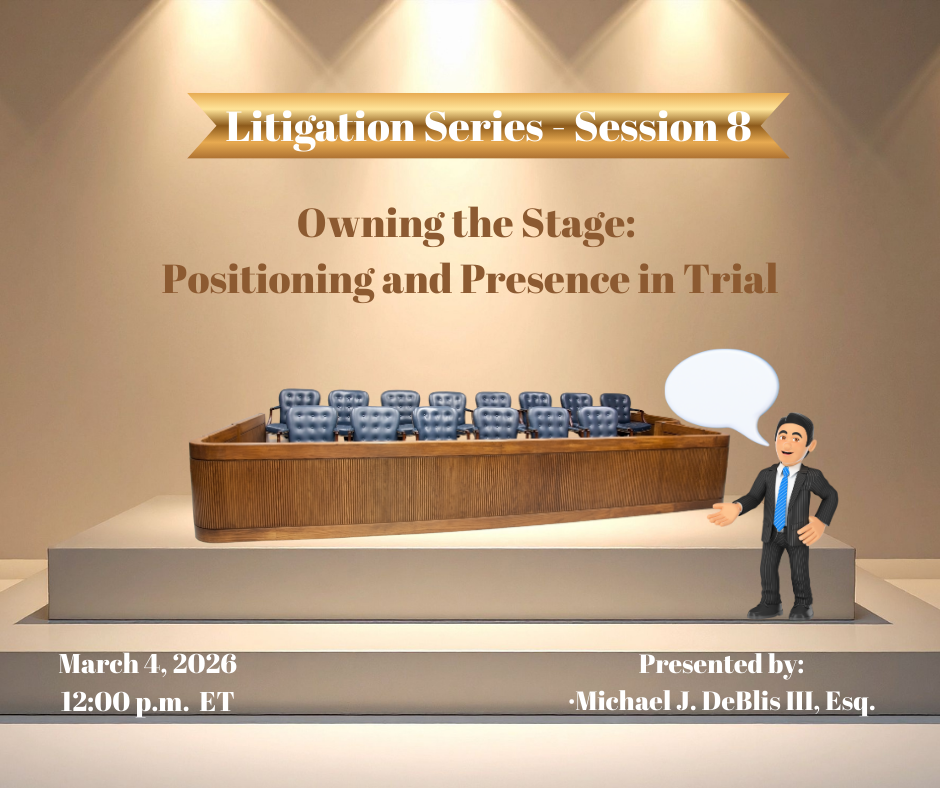
Exciting new series on “Voice, Body and Movement for Lawyers – How to connect with the jury and find Justice Through Dramatic Technique!”
Click here to find out more
This program addresses the massive problem of iatrogenic injury and death, the inadequacy of the law’s conventional response, and several of the more innovative approaches the law might be taking in the future to raise the level of patient safety. Those more innovative approaches will be more regulatory than litigative.
Three areas to be discussed are new incentives for investment in safety, error reporting, and engaged surveillance.
Learning Objectives:
• Acquire a more complete picture of the nature and extent of the problem of iatrogenic harm.
• Understand the limited efficacy of malpractice liability in encouraging prevention of harm.
• Learn about new incentives (existing and proposed) to create a business case for patient safety.
• Learn about failings of error reporting regimes.
• Learn about engaged surveillance.

As lawyers, time is our most finite resource. We have duties to our clients to ensure that their mat...

MODERATED-Session 4 of 10 - Mr. Kornblum, a highly experienced trial and litigation lawyer for over ...

MODERATED-This CLE will discuss the critical issues relating to the use of social media and legal et...

MODERATED-Session 10 of 10 - Mr. Kornblum, a highly experienced trial and litigation lawyer for over...

This course introduces attorneys to the core principles of GAAP and the legal significance of standa...

This Continuing Legal Education presentation covers electronic discovery and the related ethical dut...

This presentation explores courtroom staging—how movement, spatial awareness, posture, and pre...

The direct examination presentation outlines how attorneys can elicit truthful, credible testimony w...

Part I introduces the foundational principles of cross?examination, explaining how lawyers must meth...

MODERATED-Session 8 of 10 -Mr. Kornblum, a highly experienced trial and litigation lawyer for over 5...